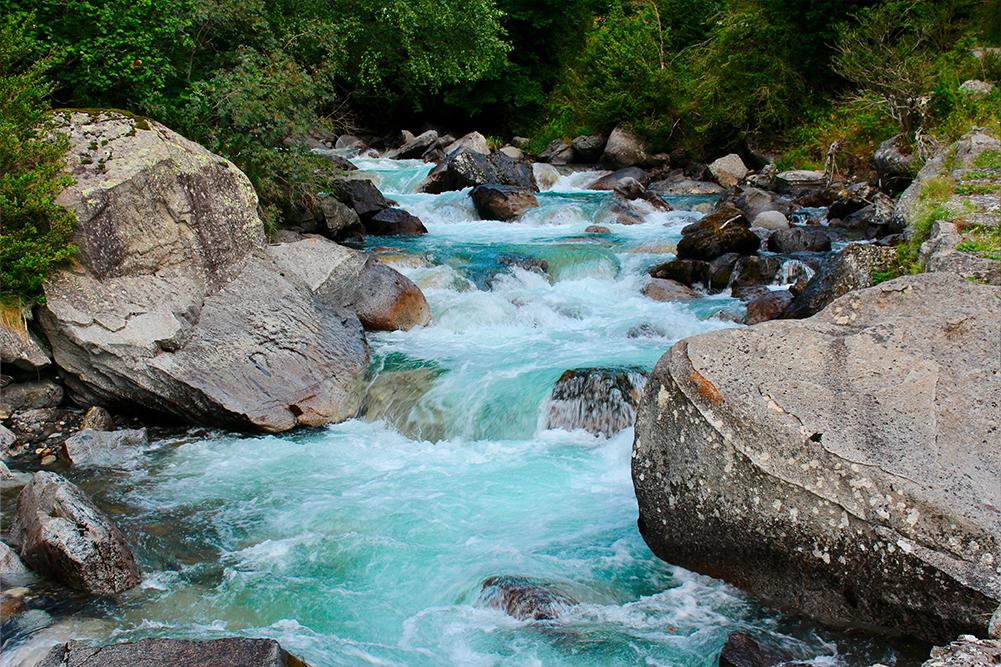Your Cart is Empty
March 11, 2024 4 min read

Imagine you are walking through the forest on Mile 8 of a mountainous hike. Ahead of you, water trickles from rock to rock, eventually settling in a picturesque lake. This is the perfect place to stop and rest. The water looks so clear, and you’ve been hiking for hours.A couple sips of water won’t hurt, you think to yourself,Will it?
While to some the idea of drinking out of a lake or stream may seem odd, others know it can be a necessity. Hikers and backpackers often face the challenge of drinking enough water during their treks, especially if they last many hours or days.
Staying hydrated is a necessity while on the trails. It is recommended to drink one half liter of water for each hour of activity (moderate) performed (1). If hiking at higher altitudes, more water is recommended. However, it is impractical to pack that much water in your backpack, especially if you are trekking for days and have other supplies packed. In these situations, you probably will turn towards the wilderness to provide you with your water–namely, streams and lakes.
Despite the apparent clarity of certain water sources, lake and stream water is not safe to drink. The National Park Service warns hikers to “never drink water from a natural source that you haven’t purified, even if the water looks clean” (2). Water often holds microorganisms like bacteria and parasites. Ingesting these organisms can cause a series of sicknesses, most commonly giardia and dysentery (3). Typically, these illnesses cause diarrhea and nausea. Therefore, no matter how clean water appears tobe, it is not safe to drink without proper treatment.
There are many pollutants that can cause these microorganisms to enter a water supply. One common way lakes and streams can be polluted is through animal (and human) feces. Even if the contaminant is not visible, it does not mean the water is safe. Especially in rainy areas, rain can carry fecal matter into water supplies. The germs from feces, of course, makes it unsafe to drink (4).
Another common pollutant of lakes, streams, and other groundwater sources is agricultural pollution. Pesticides, for example, can enter water supplies by irrigation runoff, contaminating water with glyphosate and other chemicals.
Radioactive waste is another pollutant that finds its way into groundwater supplies. Medical facilities, nuclear power plants, and mining industries typically cause these pollutants to enter the water supply, but some radioactive contaminants also occur in nature. The NRDC estimates that it would cost more than $100 billion and take more than thirty years to clean up radioactive waste from Washington alone (5). Due to its extreme costliness, radioactive waste is present in many freshwater supplies and very dangerous if consumed.
The presence of countless contaminants in lakes and streams begs the question: Can this water really be drinkable? The answer is yes, but you need the proper tools to ensure safe drinking water.
Dr. Troy Madsen from the University of Utah hospital notes that water filters are the simplest yet most effective method for creating safe drinking water out of a groundwater source (6). Water filters can allow for microorganisms like bacteria and parasites to be removed from the water quickly and effectively. It is recommended that the water filter boast a pore size of no more than .1 micron, as this can block out even the smallest organisms, namely those that can cause giardia (2). The standard for most water filter straws is .2 microns, which is actually too big to block out all parasites and bacteria. The Seychelle Hollow Fiber Straw, however, has these .1 micron pores, ensuring 99.999% of bacteria and parasites are removed from the water.
Additionally, hollow fiber straws are lightweight and compact, making them perfect for your hikes–whether they last a few hours or a few weeks!
While lake or stream water may seem appealing as you trek through a sunny meadow, looks can be deceiving. Water from a lake, stream, or other freshwater ground source cannot ever be assumed safe to drink. Microorganisms often live in these sources and can cause illnesses. To avoid a waterborne illness on your next hiking adventure, consider a Seychelle hollow fiber straw. Seychelle straws guarantee your water is safe to drink–no matter the freshwater source. With Seychelle, staying hydrated on a hike will be a breeze.
Is it safe to drink water from a lake?
No. Never assume lake water is safe to drink, no matter how clear the water appears, unless you have proper filtration equipment.
Why should you avoid drinking from lakes and streams?
Lakes and streams are a breeding ground for microorganisms like parasites and bacteria that are not visible to the naked eye. These microorganisms can cause illnesses.
How can you make lake or river water safe to drink?
Water filters, especially those with lower pore sizes, can remove most bacteria and parasites from the water source.
References